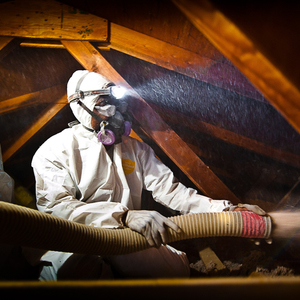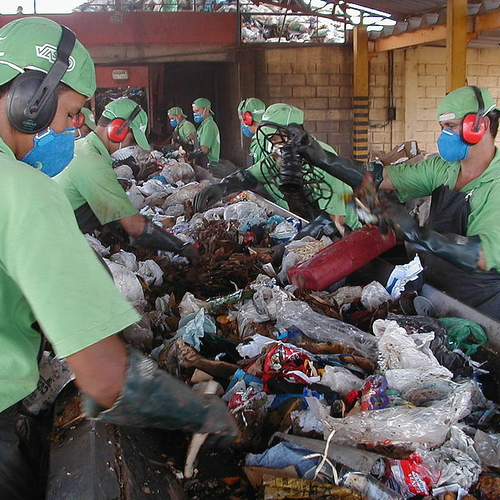
You may not realize it, but you likely encounter phthalates every day. These chemicals are found in many plastics, including food packaging, and they can migrate into food products during processing. They’re in personal care products like shampoos, soaps and laundry detergents, and in the vinyl flooring in many homes.
They’re also in the news again after an editorial by scientists in the American Journal of Public Health included an urgent call for better federal regulation of the chemicals.
In particular, scientists are urging state and federal agencies to eliminate phthalates (pronounced THAL-ates) from products used by pregnant women and children. Despite evidence of the harm these chemicals can cause, federal regulation in the United States has been minimal beyond children’s toys. A recent move by the General Mills-owned food brand Annie’s to eliminate phthalates from its macaroni and cheese suggests stricter rules are feasible.
So, what’s the risk, and what can you do about it?
I’m an environmental epidemiologist who studies the impact of pregnant women’s exposure to environmental chemicals. Here are answers to three important questions about phthalates.
Who’s at risk?
Ortho-phthalates, commonly referred to as phthalates, are synthetic chemicals that are used to manufacture plastic. They help make plastic more flexible and harder to break.
Despite their abundance in many products, phthalates can be harmful to pregnant women and their children. These chemicals can disrupt the endocrine system, the glands that release hormones as the body’s chemical messengers. Studies suggest that can lead to pregnant women delivering their babies early. Other studies have found that children born to mothers exposed to high levels of phthalates can have a lower IQ and poorer social communication development, and that these children are also more likely to develop ADHD and behavior problems. Researchers have also found effects on the genital development of male infants born to mothers exposed to phthalates during pregnancy.
While phthalates can be found in nearly everyone, minority women have been found to be especially burdened. Studies show that many beauty products targeted at these communities contain high levels of chemicals.
Infants and young children may experience high phthalate levels because they often put plastic products in their mouths as they explore the world.
Phthalates can enter food at many places in the supply chain, including through plastic tubing for liquids during production, plastic storage containers and even food preparation gloves. Foods that are high in fat in particular can absorb phthalates through exposure during processing. Eating out doesn’t avoid the risk. A study of U.S. children and adults showed that those who ate food outside of their homes had higher phthalate levels.
How do I know if a product has phthalates?
Figuring out which products have high levels of phthalates isn’t always easy. While phthalates are required to be listed on ingredients labels, they are sometimes included instead as part of the fragrance, which allows them to be excluded from the ingredients list.
Many companies have voluntarily removed phthalates, and many consumer products are now labeled “phthalate free.” The Environmental Working Group’s Skin Deep website also offers a way to search for details about chemicals in cleaning and personal care products.
How do I keep my family safe?
Phthalates are rapidly metabolized and generally removed from the body once exposure stops. Until there is better regulation, a few simple changes can make a big difference in promoting health and reducing phthalate levels in the home.
One easy change is to swap out all plastic food packaging containers with glass containers. If that’s not possible, it’s best to let food cool to room temperature before placing it in plastic food storage containers.
Don’t microwave anything in plastic, because phthalates can migrate from food storage containers into food.
You can also reduce phthalate exposure by checking labels to avoid using products that include phthalates, by eating less processed food that might have absorbed phthalates during production, and by cooking more meals at home.
Stephanie Eick is a postdoctoral scholar working in reproductive epidemiology and environmental health. This post was originally published at The Conversation and is republished here under a Creative Commons license.
Weekly Newsletter
Get building science and energy efficiency advice, plus special offers, in your inbox.















5 Comments
Good article, sounds like it can absorbed through skin contact, as well as ingestion. Perhaps an editor at GBA can identify which building products should be avoided or where they are misused. (Where to use PVC and where not use that material).
Not an expert, but my understanding is that rigid PVC products such as PVC pipe and vinyl windows (uPVC = *unplasticized* PVC) do not contain phthalates, which are plasticizers (their function is to make the rigid PVC resin more flexible.) So, from a phthalate exposure perspective, rigid PVC building products are safe (though there are other environmental concerns around their production and disposal). Flexible PVC products, such as vinyl flooring or vinyl coated fabric products, will contain some kind of plasticizer. Given the increasing concerns around phthalates, some of these products are being formulated as "phthalate free", which may be good or may just be greenwashing (it might mean the manufacturer just used a very similar or less-studied chemical -- see also: "BPA free" products that just use a different, less-publicized bisphenol).
To summarize, personally I'd try to minimize the use of PVC products in general from an environmental impact perspective. But, if you're going to use PVC products, stick with rigid / unplasticized products such as DWV pipe and window frames, and avoid flexible products like vinyl flooring or vinyl-covered furniture.
I stopped specifying products with phthalates sometime before 2001 (don't remember exactly when) because it was already clear at that time (over 20 years ago!) they caused serious health impacts, especially in children. Rigid PVC formulations don't usually contain them (but check!). On the other hand, PVC itself is quite problematic from an environmental standpoint. So as much as possible I look for alternatives to it. It's rare that PVC is the only reasonably priced option.
This comment is not directly related to building but about the chemicals we add to our environments in general.
I don't know much about phthalates or a lot of other chemicals associated with modern manufacturing processes but in general I think it is a good idea to stick with time tested products. For cleaning around the house I like inexpensive white vinegar for my toilet and places where a mild acid might serve and castile soap for my body, dishes, and laundry. Undoubtedly there are better products than these but I can't identify them with certainty and these old simple safe understood products serve well.
What about Vinyl Flooring, i.e. LVT/LVP. Any considerations there, most have a decent amount of flex. Any good brands/options (this is for below grade install)
Log in or create an account to post a comment.
Sign up Log in